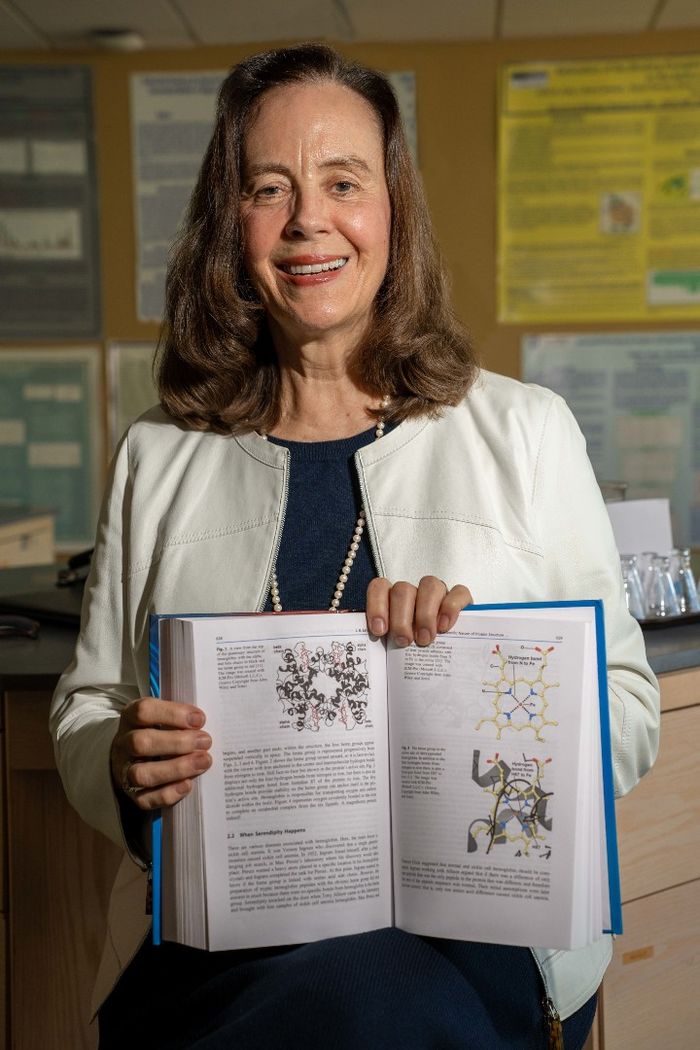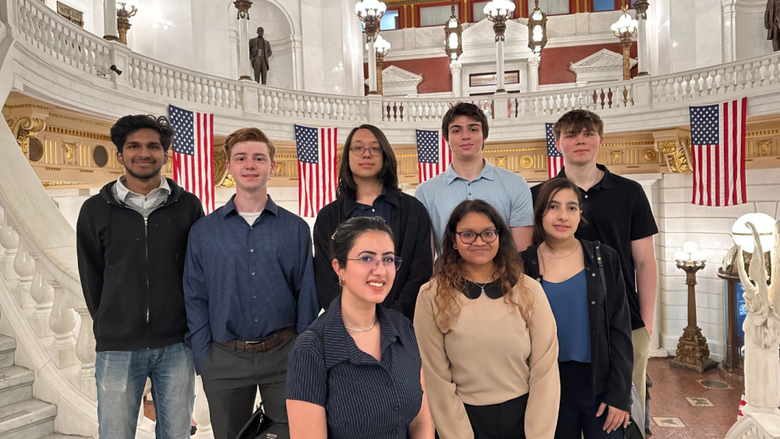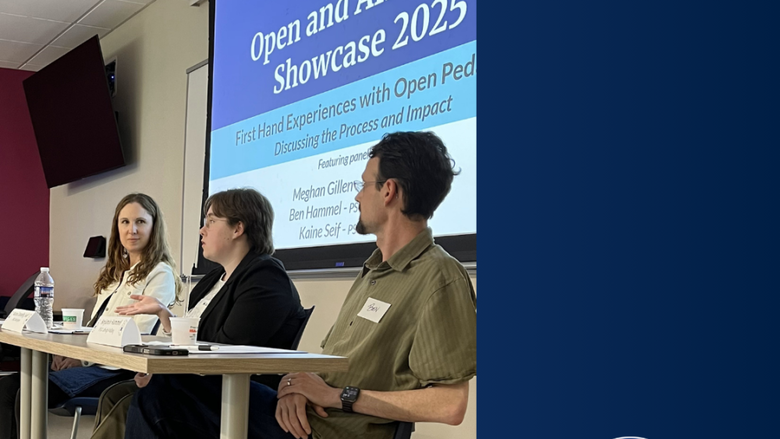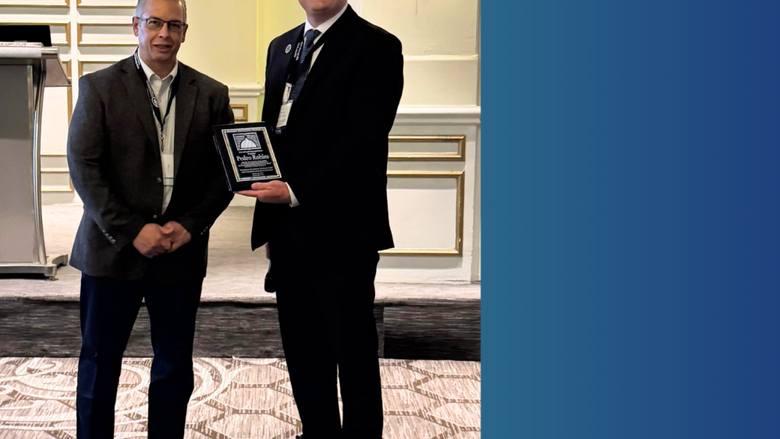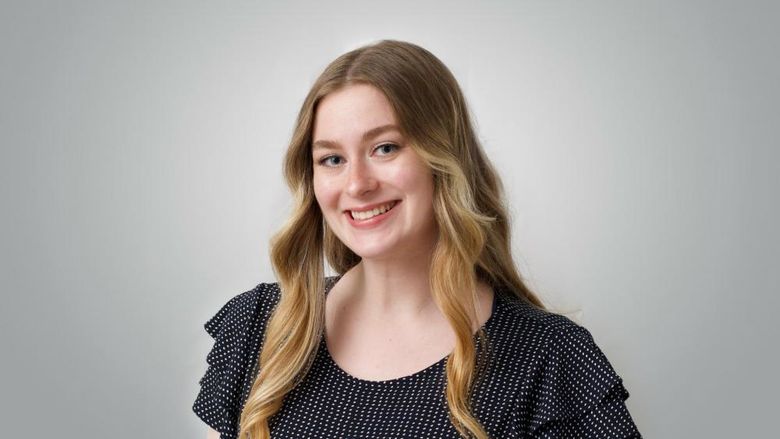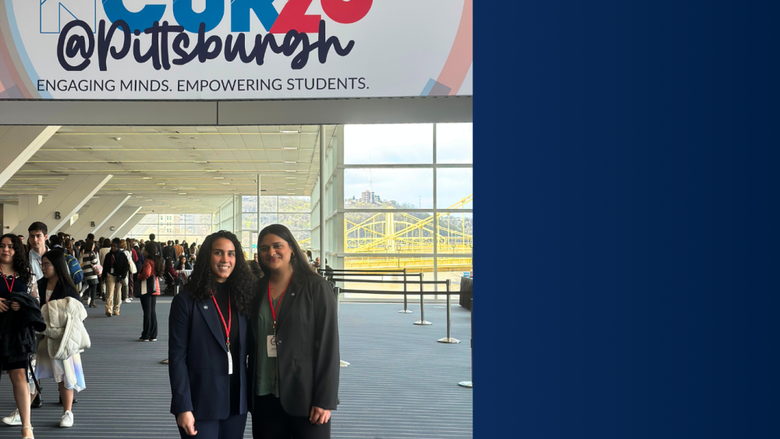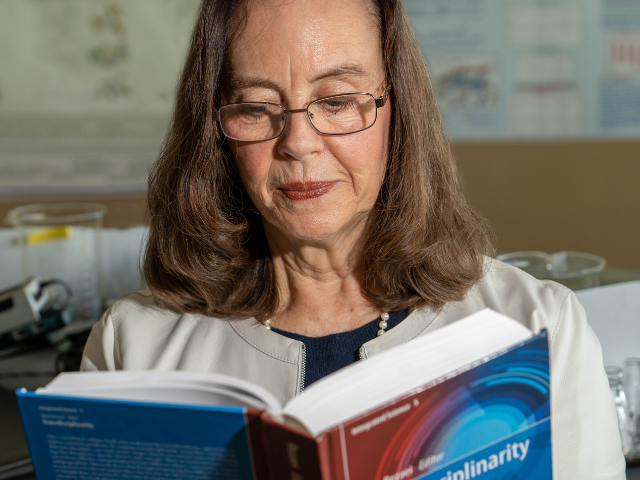
Julie Ealy, associate professor of chemistry at PSU-LV, takes a closer look at the artistic and scholarly nature of protein structures in “The Artistic and Scholarly Nature of Protein Structure: A Historical Overview,’ a chapter she authored for Transdisciplinarity, a textbook in the Integrated Science book series, now available.
CENTER VALLEY, Pa. — As a scientist, Julie Ealy, associate professor of chemistry at Penn State Lehigh Valley has viewed countless molecular structures, from the smallest to largest like proteins, using computer software.
“How molecules look is really exciting to me. I think molecules are just beautiful,” she said.
Ealy takes a closer look at the artistic and scholarly nature of protein structures in “The Artistic and Scholarly Nature of Protein Structure: A Historical Overview," a chapter she authored for "Transdisciplinarity," a textbook in the Integrated Science book series, now available.
When Ealy was approached to write a book chapter, she was a bit nervous. “I’d never written a book chapter,” she said. “I had to think about what is near and dear to my heart.”
Ealy had been using various computer programs to view molecular structures for years, both in her own work and with her students. Her focus of the chapter became clearer: “The chapter was written to capture the beauty of molecular protein structure that can be visualized with computational chemistry software,” she said. "Viewing these structures with a computer is important to pharmaceutical companies developing new drugs associated with proteins. Could we develop new drugs faster using the computer software, and with fewer side effects? And, perhaps, address the difference in people and how drugs affect them."
Ealy spent two years working on the project. Besides the text, the chapter includes photos of molecular structures portrayed in different art forms; namely, a sculpture of a hemoglobin molecule, and a sculpture of a DNA molecular structure, accompanied by a computer-generated scientific representation. “I wanted to combine the two parts — science and art,” Ealy said. “There is beauty to the structure, and I wanted to include how artists have captured that structure.”
One of Ealy’s goals for the chapter is to stress the painstaking, time-consuming process of getting a drug to market. “Not all drugs work the same for everyone. Visualizing proteins on the computer starts with the protein structure first. You don’t just go into a lab and start mixing chemicals. There’s meeting with a group of scientists and biologists to synthesize the drug, then it goes to animal testing, then human testing. It’s a very long process. The COVID vaccine was an absolute phenomenon that had never occurred before. The science had been available for 30 years, but artificial intelligence (AI) is what got it to market,” she said.
Ealy enjoyed the new experience of authoring a book chapter. “It’s given me some thought about the types of writing I could do that would show my passion for science and art,” she said.
